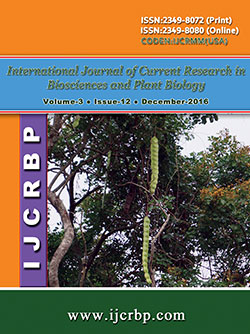 |
Online ISSN : 2349-8080 Issues : 12 per year Publisher : Excellent Publishers Email : editorinchiefijcrbp@gmail.com |
Daphnia magna are common planktonic crustacean of the subclass Phyllopoda that can be found in lakes and ponds all over the Holarctic. They have been the subject of biological research since the 1700s because of their value as an experimental organism; this is due to their plentitude, easily observable organs, easy maintenance, and quick reproduction rate. As a result, they are a well-known reference organism to study aquatic environmental contamination. Using this species, three different environmental hormones, deltamethrin, bifenthrin, and glyphosate, were introduced to develop an environmental pollution research model. The standard method of determining physiological differences of Daphnia magna typically observes only its heartbeat. However, in this study, one more variable was added in order to more accurately reflect the physiological changes underwent by Daphnia magna when their environmental conditions were altered: their swimming rate. In the actual experiment, the Daphnia magna were exposed to a serial dilution solution of the environmental hormones in a contamination model and then had their heartbeat rate measured. The experiment was then repeated under the same conditions for estimating their change in swimming rate. In each pollution model technique, the data demonstrated a mathematical relation of heartbeat rate and swimming rate with polynomial functionality. The sensitivity along the dilution concentration was different between the % heartbeat change and % swimming rate change, which might mean that both parameters should be mutually complementary and carried out simultaneously, when any environmental hormone’s toxicity is required to be thoroughly studied. The dangers of environmental hormones should not be downplayed and a more effective method for checking acute toxicity should be useful.
